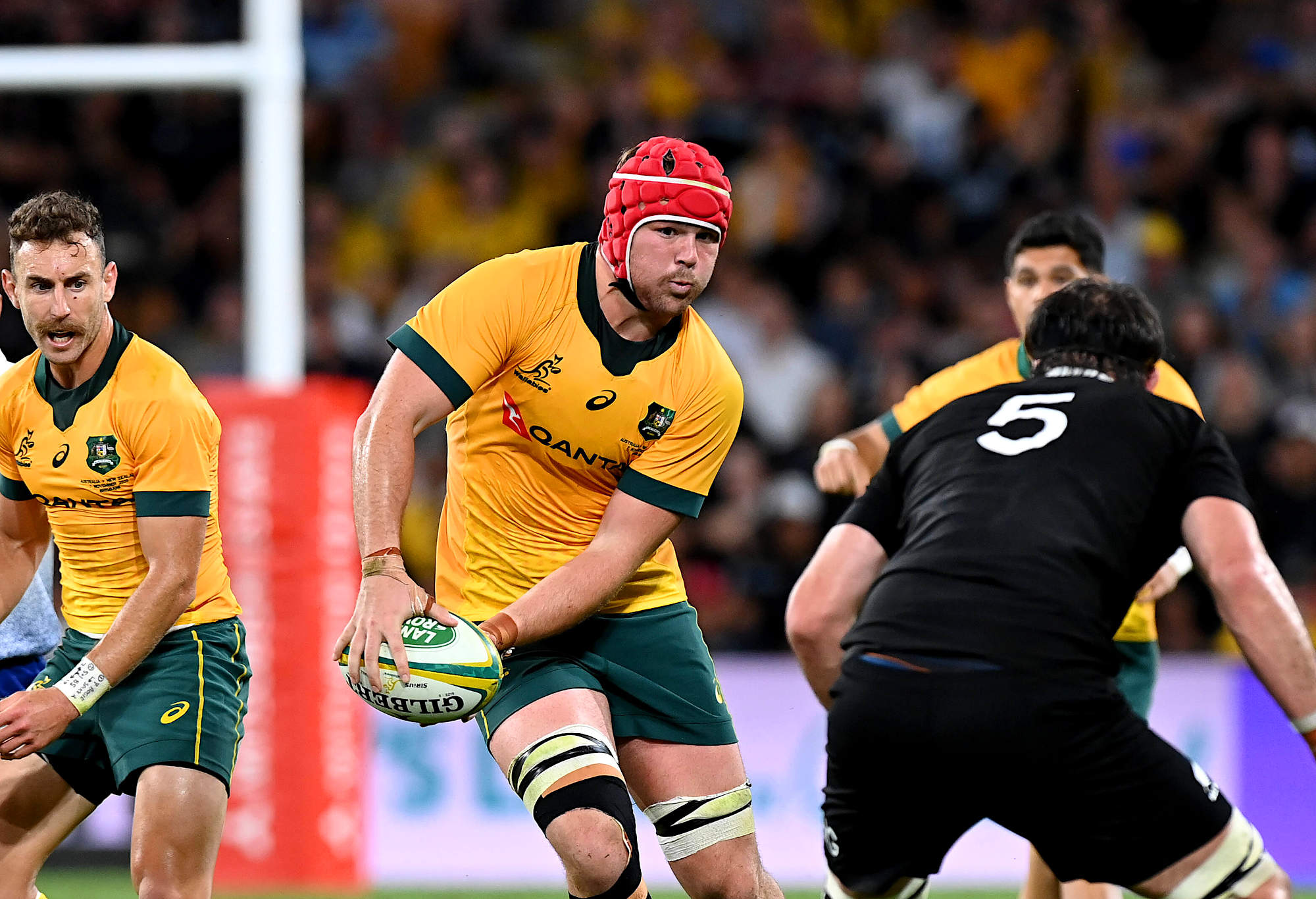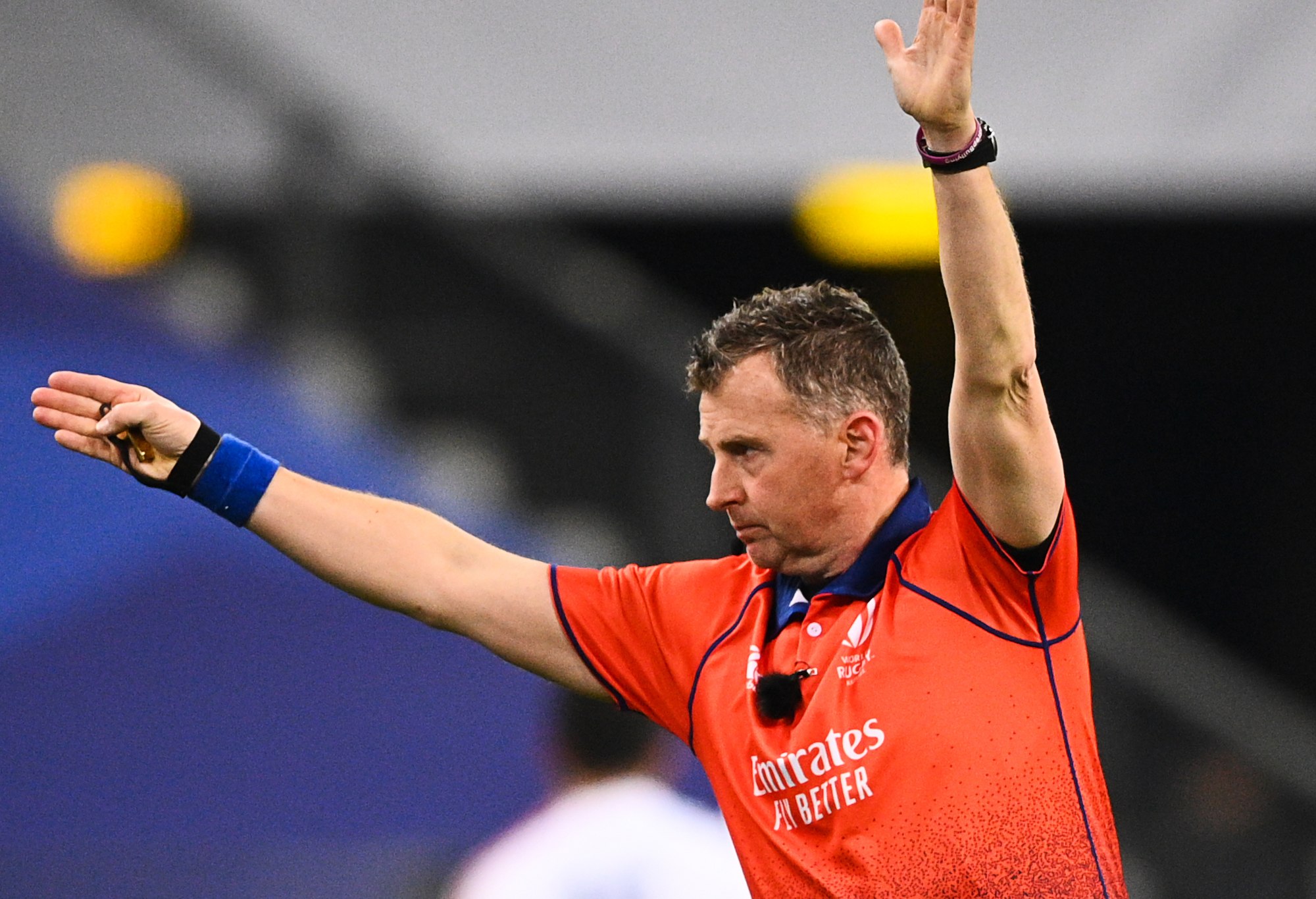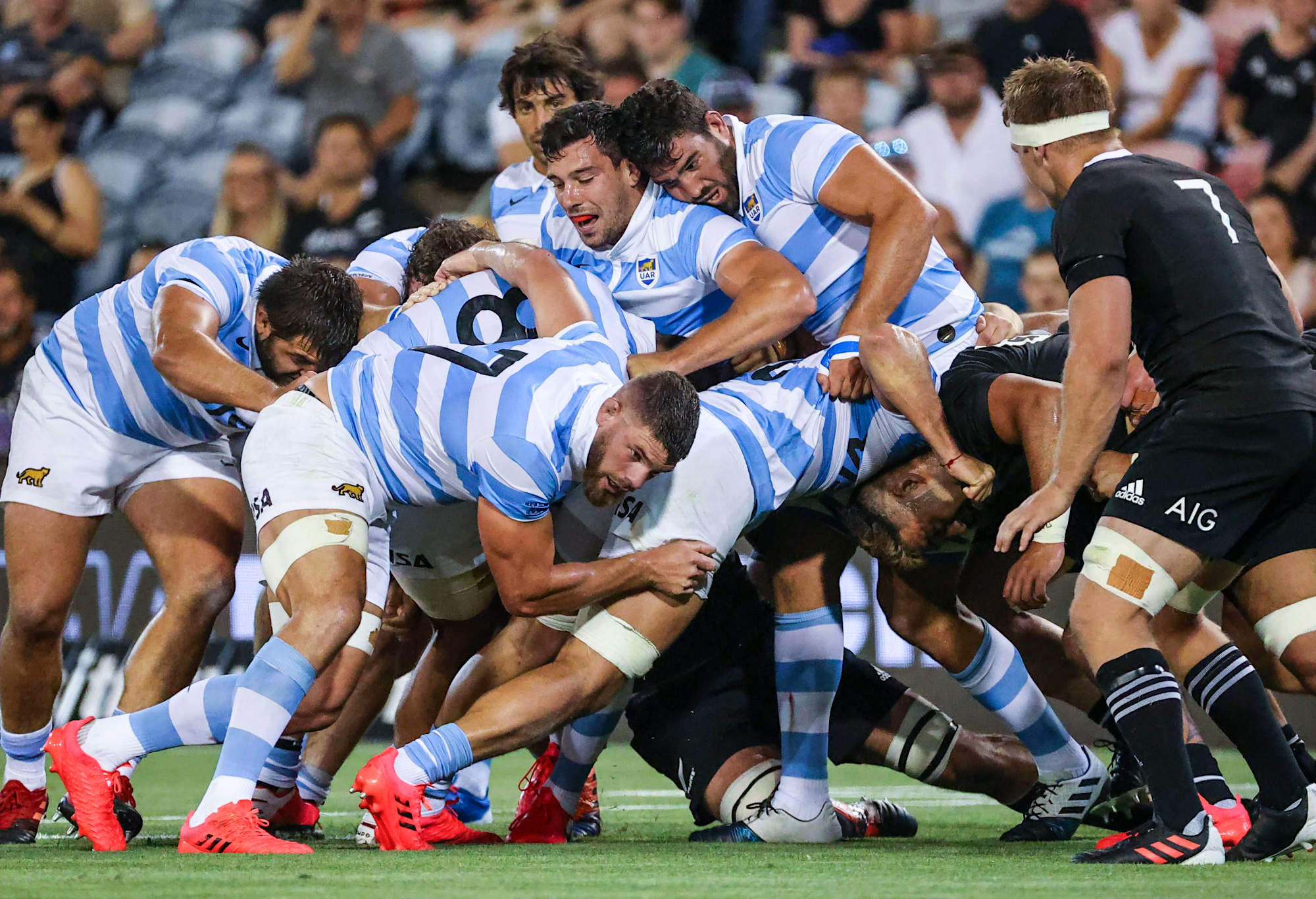I saw a post the other day about how much fun it is to take on the job in the middle with all the spectators, most fairly well liberated with an alcoholic beverage or three, questioning every decision you make and, despite only getting a one view of the incident, still calling you out and explaining why your decision was wrong.
The vitriol that was provided to Nick Berry after the Super Rugby AU final online was a great example of this.
Luckily, for his ongoing peace of mind, Nick doesn’t read these posts. He doesn’t read them because firstly, he knows that logical arguments with a clear explanation aren’t going to change the minds of some people. Secondly, most of the posts are written by people who don’t have a huge understanding of either the laws of the game or how they are applied.
The laws of the game are easy to find. This link will take you directly to them. They are in English and have also been translated to a number of other languages, so there is really no reason not to know them.
I personally found a lot of the posts confronting and probably didn’t react that well to some of them. However, on reflection, they also showed to me showed a general lack of understanding on the application of the laws and the different aspects a referee faces during a game which encouraged me to write this article.
I hope you enjoy it and look forward to seeing where I got it wrong.
These are my personal views only. I have gained these views from a career of playing rugby from the age of six to about 47 with a small three-year period where I played league because that game, for some reason, was prevalent in the army during that time.
I never played any representative rugby, although I have played up to senior club level in the Hutt Valley. In fact, I was in the same team as Bernie Fraser when he played for the All Blacks. I also represented various teams in the army and played against other services, other armies, and some clubs in places as diverse as Bosnia, Israel, Egypt, the UK and Australia.
I have been a referee for the last 13-odd years starting in the Manawatu then Wellington, Canberra and now Sydney. I have refereed international matches between defence teams from other countries in New Zealand, Australia and Egypt so feel able to make some observations on the refereeing of this sport we love so much.
Referee infallibility
Now I’m not going to claim referees don’t make mistakes, nor am I going to look at lots of specific instances where there are arguments. Referees absolutely make mistakes. That clear example of the assistant referee not seeing an All Black foot in touch right in front of him where the said All Black then scored a try is a clear example of things not going right. Why he missed that I’ll never know.
He was looking higher in the frame and maybe focusing on the attempt at the tackle to ensure it was legal. Whatever the reason, it was a definite mistake. However, despite the try being scored, that wasn’t the reason the All Blacks won.
If it had been called then the whole remainder of the game would have changed as play would have reset from the lineout. There was enough time left in that game for anything to have occurred and so saying that missing this incident cost the Wallabies the game just really shows a lack of appreciation of the flows in a game and how they can always change.
However, in saying this, law 6.5.a. does state that the referee is the sole judge of fact and of law during a match. So, like being an officer in the army; even if I’m wrong, I’m still right. I love this law.
Law complexity
The laws of the game of rugby are quite complex, but this is for a very good reason. The post-contact tussle for the ball while players are in contact with each other provides a lot of complexity to remain a fair contest. Other games, such as league, are much simpler because while the players still run at and tackle each other, as soon as they make this contact the game stops and they start again.
Even in Australian rules football, with all the moving parts while the ball is in the air, play stops as soon as a player with the ball is tackled or held.
This difference with rugby is that the contact between two people is the start of the contest for possession – not the end. This creates a level of complexity that just doesn’t exist in these other games. This is why the other games are easier to follow and less controversial in their adjudicating. The rules for the contest in rugby are designed so that they provide both teams with a fair contest for the ball. This means that the tactics and skills of the players determines the outcome, not the laws.

(Photo by Bradley Kanaris/Getty Images)
When the ball is being contested, especially when it is a maul or a ruck that has evolved from a contact between the two sides, there are a lot of moving parts. Players are joining and leaving the contest, the contest itself is often moving from side to side and back and forwards, the players not included are moving to either take advantage of winning the ball or setting themselves up to defend if the other team wins and the players in the tussle are either trying to tie the ball up or free it up.
The referee will always have six to eight things that could be ruled on depending on what law is applied. Critical to this decision making is where the referee is standing. They will see different things happening and therefore make a different decision that would have been made had they been standing elsewhere and looking at the contest from a different view.
In a lot of ways, this is at the heart of the complaints because the spectators (this includes the commentators and other so-called experts who think they know more than they do) will often see a different picture from the referee and so will pick on something other than what the referee ruled on. The essence of good refereeing is to get to the point where you can see the most important thing to call in the context of the game at that time.
Another point that is often overlooked by spectators is that depending on the position on the field, the time in the game, and even the score sometimes, some calls will have priority over others. For example, if a team is ahead by 30 points with 20 seconds to go with possession in a maul deep in the opposition half, I am unlikely going to be too hard on the opposition offside either around the maul or in the backline.
Tactical refereeing vs technical refereeing
One of the big emphases, especially in New Zealand, for referee training is the application of the laws during a game. We are taught to look at both the technical and tactical aspects of applying the law during a game. The main reason behind this is because there are so many laws, there is always something that a referee could make a call on.
A referee who only looks at the technical application will be blowing the whistle at every collision and the game will quickly become a very boring stop-start game with endless scrums, penalties and lineouts and probably, a very low-scoring affair.
Referees do the job because they enjoy the game and, like the players and spectators, they want to see an open game with lots of movement and play. This means they look at what is going on and try to make decisions based on what they see has the most material effect on the game at that time. A classic for me was in a semi-final where a team defending a lineout didn’t jump to contest the ball.
While the ball was not thrown in straight, I ignored that rule because the fact the defending team didn’t contest the ball in the air meant the crooked throw didn’t affect the outcome. The attacking team were going to win the ball anyway, so why stop the game in that situation? The defending coach was unhappy because their team let in a try that decided the game, but he eventually agreed that the ruling was fair.
Consistency
This leads into what is sometimes the most controversial part of the refereeing game. Players, spectators and especially commentators all talk about wanting consistency in refereeing. The trouble with this is when you are applying the law tactically, the result often seems inconsistent. For example, a player who is offside in the backline is clearly breaking the law. However, where the play develops in a way so that them being offside doesn’t affect the play, the offside is often not called.

(Photo by ANNE-CHRISTINE POUJOULAT/AFP via Getty Images)
At other times, where the player is affecting the decision making of the attacking team, and sometimes not by being in play but just being in the way and making the team change their plan, then the player is called up. All that can be seen by the spectators and commentators is a player offside and sometimes getting away with it and other times not getting away with it. This is then brought up as inconsistency by the referee.
What the spectators don’t always understand is that often a referee, especially an experienced one, will see where a team is planning to move and understands the impact of these players so while the result looks inconsistent, it is actually a consistent application of the tactical aspect of the law.
The other inconsistency is the apparent difference between the application of the law by different referees. This is one that I actually agree with but rather than a difference of application, I see it as a difference in the way a referee moves and so they are often seeing different things and so making different judgement on different scenarios.
I am absolutely certain that if two referees are seeing the same thing, they will rule on it the same way. However, due to a lot of reasons you will get one referee around one side of a ruck and another around the other and so their adjudicating will be different.
Scrums
One of the most common comments from spectators is that referees make decisions on the scrum by guesswork and that they have no idea on what is going on. In my mind, nothing is further from the truth. Referees spend a lot of time with some very good coaches on the scrum.
Even in my first two years of refereeing I had Bryce Lawrence come in and spend two days on just the scrum and what each player is doing or trying to achieve when they are in an attacking or a defending scrum. Top referees spend even more time to sit down with scrum coaches to understand what is going on.
The referee also has the best view of the scrum. While the overhead camera shows more than the side camera, what it still doesn’t do is give a three-dimensional look at the scrum, so while it might clearly show a player on an angle, it doesn’t show what else happened to get that angle and what was happening in the scrum.
The referee being so much closer can see the top of the scrum, and the work being done inside by the props and locks. I am totally convinced that most referees know more than the players at times on what goes on in the scrum and for the most part they get the calls correct.

(Photo by David Gray/AFP via Getty Images)
Outside interference
The introduction of the assistant referee and TMO has been an interesting one to follow. It is so far removed from what I referee on a daily basis that I am not able to provide a lot of context.
The biggest issue seems to be that there is no clear directive on what the TMO is to look at and what they shouldn’t look at. In most cases, they go too far and have too much influence. From what I recall, they were originally only called in to look at the try-scoring moment, then they were allowed to go back two or three moves, then look at foul play, and now they seem to have morphed into a beast that interferes with far too much and causes delay for delay’s sake.
It is an interesting balance as I’m sure that while everyone hates the TMO, they are more than happy to accept them bringing something up that gives their team an advantage, especially if it turns over a score against them and this will unfortunately ensure that it continues.
Country and World Rugby direction
There is also a difference between the application of the law brought along by directives from the unions on where they want the emphasis placed. We saw this recently with the direction on high tackles and this was a bit of a mess.
There was a very good article by Highlander that looked at how different countries had applied the directive from World Rugby on the application of the current law on offside, entering the ruck, securing the ball and remaining on your feet in a ruck.
Most countries accepted the increase in penalties and cards as a consequence of players having to learn to play differently and after a season or so the players and coaches did adapt, and these penalties and cards became less. These changes also had an effect of speeding up the game and making players have to learn how to react faster, make faster decisions and use the ball more.
Unfortunately, in Australia, there was a big push against the penalties and cards from spectators, commentators and the media who didn’t seem to understand that the players and coaches would take some time to adapt. The hierarchy managing the game here feared that this would further reduce the spectator numbers. They changed the application and referees here do apply these laws differently. How much of an effect this will have on international rugby is yet to be determined but the Roar article suggested it might be bad.
So, in conclusion to this rather wordy piece; yes, referees make mistakes.
I don’t believe there are as many mistakes as some people believe and I don’t think the mistakes have as large an effect on the game as people would try and have us believe. The game moves too much for a decision to have a lasting effect and invariably there are other decisions by players before or after the referee’s one that have a far bigger impact.
Not everything you see on a TV or from the sideline is going to be the same as the referee and they will often have a greater appreciation of all that is happening. By seeing a different picture than you have, they may make a different decision than what you’d expect.
The rules for the game are complex, however, this is because the game itself is complex. There is not a great need to change any of the rules, all that is needed is that the ones that are currently there are applied properly. Doing this will provide the space needed for teams to execute properly and to speed up the game.
And, in accordance with Law 6.5.a. the referee is actually correct even if he seems wrong so there!
































































































